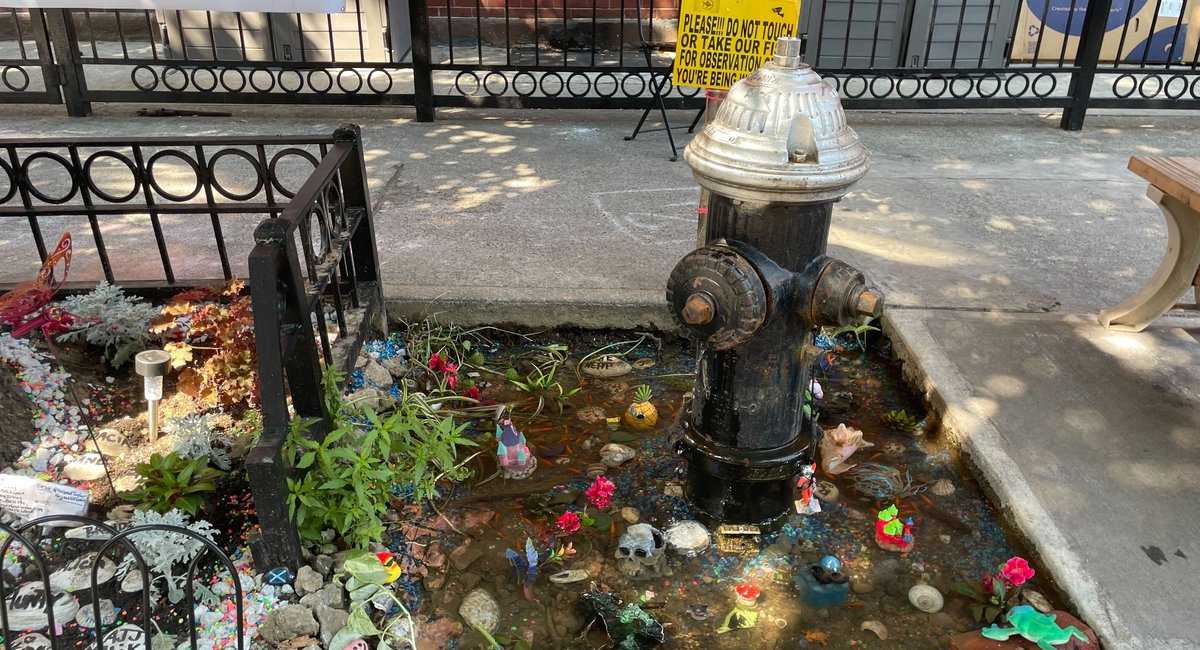For more than a month, a Bed-Stuy block has been debating what to do with around 100 bright orange goldfish swimming around a leaky fire hydrant in a sidewalk pit.
But environmentalists say one option should be kept off the list of possibilities: throwing the fish into the Hudson River. Feral goldfish are already causing havoc in the waterway, where they outcompete native fish for food, damage plant life and grow to outrageous sizes, according to the state’s Department of Environmental Conservation. When the fish are taken out of aquariums and dumped into a body of water like the Hudson River, they grow like gremlins. A fishbowl goldie is typically 2 inches long and weighs around a half-pound or less. But the largest goldfish caught in New York’s waters measured just under 24 inches, and the world record was an astounding 67 pounds.
“One of the great tragedies of introducing non-native species of fish… are that so often you can’t get rid of them once the mistake is made,” said John Waldman, a biology professor at Queens College.
For now, the volunteers overseeing the Bed-Stuy street aquarium are still mulling what to do with the omnivorous bottom-feeders. Some want to rescue the fish and move them to an indoor aquarium. Others have a vague plan to somehow legitimize the outdoor display through approval from the city parks department – and perhaps even build a solar-powered outdoor aquarium in the pit to keep the fish alive through the winter.
“We are creating a public living room for the entire neighborhood,” said Devand Arvind Shah, an architect and one of the Brooklyn sidewalk pond’s curators. “The actual conversations and dynamic between the neighbors in this block has completely changed.”
The fish are dependent on Bed-Stuy residents remaining committed to maintaining the sidewalk pit. Often when goldfish owners lose interest, they’ll toss the critters into a body of water under the impression that it’s the humane answer to buyer’s regret.
But in the wild, goldfish are prolific proliferators that reproduce multiple times in a season. A 2019 survey by the state’s Department of Environmental Conservation found that goldfish accounted for just over 1% of the fish caught in waters in or near the Hudson River. Although that’s a small percentage, goldfish are a significant presence when their size and weight are taken into account.
While a pet goldfish may live five to 10 years, a feral one can live several decades. The oldest recorded goldfish was 43 years old.
“There is tremendous biomass contained in these fish. Big and chubby. And that’s a lot of fish flesh in totality, which is using food resources and nutrients that could be going to the native species,” Waldman said.
Goldfish, which are not native to New York’s waters, originally come from Asia. The invasive species of common carp has populated lakes, rivers and ponds in the state and across the country via the pet trade for nearly 200 years.
Feral goldfish are voracious and aggressive creatures that can eat almost anything, including other fish and their eggs. They can live under many different conditions, including in poor water quality. And while they can tolerate water temperatures ranging from freezing to around 80 degrees Fahrenheit, they thrive in warm waters. Goldfish can be found in ponds, marshes, lakes, rivers, bogs and swamps.
When they feed, they root around a river bed, stirring up sediment and making the water murky. They suck in sediment, filter out the food, and then spit out the rest. This makes visibility difficult for other fish. It blocks sunlight that aquatic plants — which form an important habitat for small fish — need for photosynthesis. Goldfish feed so vigorously that they can uproot plant life.
“They’re not gentle,” said George Jackman, habitat restoration manager at Riverkeeper. “They can even destabilize the fringes of marshes as they root around.”
Goldfish waste can also exacerbate algal blooms, and the resulting toxins not only kill fish, but also land animals, including humans. The aquatic bacteria reduces the oxygen and sunlight levels in bodies of water, making life unsustainable.
Goldfish also carry a herpes virus, HVHN, that can harm other aquatic life.
“They’re very destructive to native fishes,” Jackman said. “They act like bullies, and they outcompete, they change the habitat and they take over.”
That destructive nature contrasts starkly with the small goldfish in the Bed-Stuy display.
“They bring a lot of joy, they bring a lot of laughter, they bring a lot of people together, a lot of love. It’s beautiful. It is very peaceful and wonderful,” said Hajj-Malik Lovick, a longtime Bed-Stuy resident who helped create the sidewalk aquarium.
